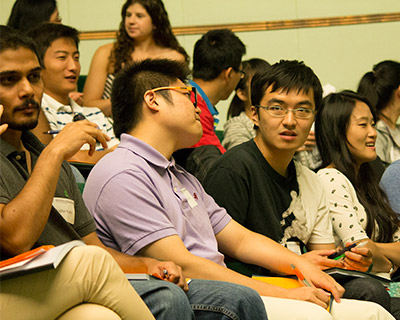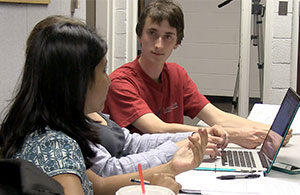UMS in the Curriculum
 With its world-class musical, theater, and dance performances, the University Musical Society (UMS) is often touted among faculty as a signal benefit of living in Ann Arbor. But did you know that UMS can also be a rich resource for your teaching? Thanks in large part to a three-year grant from the Andrew W. Mellon Foundation, UMS has been devoting significant resources toward the goal of infusing performing arts into the curriculum across campus. Their initiatives to support U-M teachers in connecting their courses to particular performances include:
With its world-class musical, theater, and dance performances, the University Musical Society (UMS) is often touted among faculty as a signal benefit of living in Ann Arbor. But did you know that UMS can also be a rich resource for your teaching? Thanks in large part to a three-year grant from the Andrew W. Mellon Foundation, UMS has been devoting significant resources toward the goal of infusing performing arts into the curriculum across campus. Their initiatives to support U-M teachers in connecting their courses to particular performances include:
- The guide "Arts in Context: UMS in the Classroom" (this season's is available here in pdf) provides detailed guidance about each performance, including a list of disciplines with which it might intersect, some key topics or themes, resources for exploring and contextualizing the performance, and even reflection questions to guide student responses. The guide also highlights some themes that are shared across several performances, helping faculty think about clusters of events that might be incorporated into their syllabus.
- Campus Engagement Specialist Shannon Fitzsimons is available to meet with faculty individually to design ways to incorporate one or more UMS performances into their courses. You can contact her at [email protected] or 734-764-3903.
- UMS's student ticket programs reduce the cost to students to attend performances; group discounts are available as well.
- The Arts at Michigan program provides $500 grants to support arts-related learning activities in courses across the curriculum. Funds can be used to buy student tickets to UMS performances integrated into a course.
- The Faculty Institute on Arts Academic Integration provides more extensive training and resources for faculty fellows who seek to incorporate performance and arts-based learning into their teaching.




 If you teach using presentation software such as Google Slides or PowerPoint, do you ever wonder whether your slides are more of a distraction than an aid to learning? At CRLT, we regularly consult with instructors who want to maximize the instructional value of their slides but aren't sure how to do so.
If you teach using presentation software such as Google Slides or PowerPoint, do you ever wonder whether your slides are more of a distraction than an aid to learning? At CRLT, we regularly consult with instructors who want to maximize the instructional value of their slides but aren't sure how to do so. 


 The most common definition of a flipped class is one in which conventionally out-of-class activities are swapped with conventionally in-class activities. In many courses, a traditional model involves content-delivery during lecture followed by student practice at home. In a flipped model, students are introduced to course content before class, and classroom instruction time is used to guide students through the kinds of practice and skill-building opportunities that traditionally were assigned as homework.
The most common definition of a flipped class is one in which conventionally out-of-class activities are swapped with conventionally in-class activities. In many courses, a traditional model involves content-delivery during lecture followed by student practice at home. In a flipped model, students are introduced to course content before class, and classroom instruction time is used to guide students through the kinds of practice and skill-building opportunities that traditionally were assigned as homework. ve
ve

